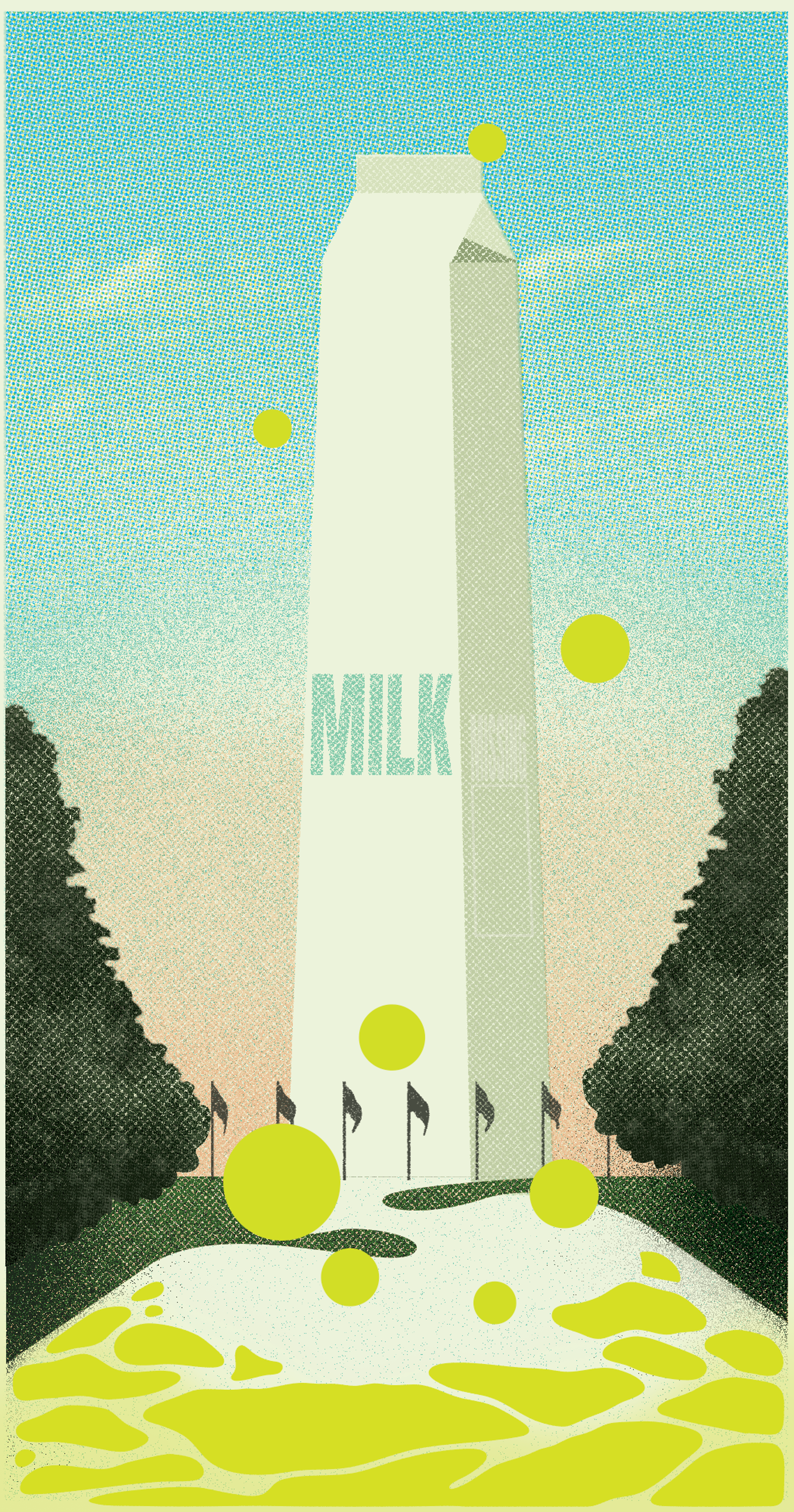Pollution from this heavy metal is still being released into our atmosphere, soil, and waterways — both accidentally and on purpose.
When determining the canary in the coalmine for the toxic chemicals being released into our environment, we may need to look at the world’s largest predators. In Georgia, it’s an unlikely ancient creature ringing the bell — their American alligators have been found to harbor large amounts of mercury in their blood.
This discovery from researchers at the University of Georgia (UGA) not only shows the prevalence of mercury in local waterways, it also raises questions about the amount of chemicals in the fish the gators eat, as well as other creatures that share the rivers and swamps. Older gators were shown to be consuming and retaining significantly more mercury than before; it was also being passed into their eggs.
A neurotoxin that is naturally present in the ground, mercury has been used for centuries for paint, mining, thermometers, contraceptives, detonators, lightbulbs, and batteries, among other novel uses. It has also been named by the World Health Organization as one of the top 10 chemicals presenting a hazard to human health.
Many industries have evolved to eliminate this hazardous substance from their processes or worked to reduce it, but the question remains: Why are such large quantities showing up in the food chain? There are a myriad of reasons for this phenomenon, but our changing climate has been identified by researchers as a key factor.
What the Alligators Tell Us
Kristen Zemaitis is a biologist and the lead author of the alligator study at the University of Georgia, focusing on Okefenokee Swamp, Jekyll Island, and the Yawkey Wildlife Center. She looked at alligators because they are an apex predator that consumes smaller animals over a long lifespan, leading to long-term mercury accumulation in the blood.
Blood samples were taken from alligators of different ages in the area and tested to ascertain their mercury levels. The study found that accumulations varied across sites, but the ecology and age of the animal affect the toxin burden that mercury places on the animals from birth into old age.
While the health of alligators is less directly affected than in small mammals or birds, wildlife like this is certainly impacted. “Some of those health issues include issues with reproduction, cognitive behavior in animals. Especially, we see issues with how fast they’re reacting, or how they’re hunting, and eventually it can lead to poisoning and death,” Zemaitis said.
“We think about all these interactions they’re having with these different food webs and ecosystems throughout their lifetime. They could be getting things like contaminants into their system and then also spreading them throughout the ecosystem.” And while the swamp is in an isolated area, it can still have human impacts. “It’s not just fishing, it could also be hunting, just because of the interconnectedness of the food web,” Zemaitis concluded.
Mercury and the Environment
Swamps like the one in the alligator study function like wetlands — with saturated soils and slow-moving waters fed partly by precipitation — which allows mercury to accumulate. “It’s most likely coming from the burning of coal, which happens at our coal-fired power plants, because that’s by far the biggest user,” said Jeb Byers, research professor at the University of Georgia, who contributed to the study.
He explained the climate change connection related to using fossil fuels. “So burning coal is fostering greenhouse gases, and it’s also putting mercury into the atmosphere, because the mercury is trapped inside the coal and released when it gets burned. So they come together.”
Climate change puts stress on marine life, with warmer temperatures forcing fish to consume more food in order to grow, resulting in a higher mercury intake. This chemical has staying power too, persisting in the oceans for 300 years, making it a particular problem in the Arctic, where it is bioaccumulated and magnified. Mercury that has made its way there through water and air is being released as the ice melts due to higher-than-average temperatures.
Despite concerns about air and water, soil has been found to be the best incubator for mercury pollution, holding three times as much as the ocean and 150 times more than the atmosphere. Hot temperatures increase plant growth, so the decomposition then deposits more mercury back into the earth.
Farmed animals like cows, sheep, or pigs can potentially ingest more mercury from grazing on contaminated soil.
Farmed animals like cows and sheep can potentially ingest more mercury from grazing on contaminated soil. A study into these effects concluded that heavy metal poisoning is one of the biggest reasons for non-disease-related illnesses in livestock. It also affects both productivity and reproduction, making contaminated animals an economic issue as well as a public health concern.
Increased flood events also introduce more mercury into water courses as contaminated soil is washed into the ocean. This mud obscures light levels and means that there are fewer phytoplankton and more bacteria in aquatic environments, leading to higher mercury concentrations. Researchers found that this is more of an issue in estuaries and lakes than in the ocean, where it will be less concentrated.
Human Impacts
According to the EPA, eating fish is the most common way for people in the U.S. to be exposed to mercury, although its prevalence means that almost everyone has some amount inside them. People particularly at risk are those in the Arctic, tropical riparian communities like those in the Amazon, coastal or sea-fishing communities, and those close to mines.
Bacteria also interact with mercury to turn it into a more toxic form, known as methylmercury. It is this that inhabits the food chain, and high levels, such as those in mining towns in Ethiopia, can kill. As well as neurological problems, it can cause cancer, miscarriage, blindness, and deafness in adults. Unborn babies and newborns are particularly at risk as mercury crosses the placenta, and it is passed via human or animal milk.
Megan Weil Latshaw is an associate teaching professor at Johns Hopkins Bloomberg School of Public Health who has studied the environmental effects of mercury and other heavy metals.
“Mercury impacts both the nervous system (including the brain) and the cardiovascular system (including the heart), so older people might be more sensitive to mercury,” she said. “This is especially true as doctors might recommend older people eat less red meat (which is good for their cardiovascular system) and eat more fish (which might be high in mercury).”
“Mercury can travel pretty far in the environment, so you don’t need to live near a source of mercury to be exposed to it,” Latshaw added.
The Geographical Lottery
In the Northeastern United States, where incinerators, electrical facilities, and industrial processes are still releasing mercury into the atmosphere, an oft-mentioned aim is to reduce these by 70%. Fish like yellow perch have shown accumulations that well exceed safe consumption levels.
The continuation of mercury emissions in the U.S. is estimated to have created three times the amount of concentration in the marine environment when compared with pre-industrial times. How much it bioaccumulates can vary wildly, according to a U.S. study that looked at aquatic marsh, river, estuary, and shelf systems.
The researchers involved in the alligator study suggest it shows a clear need to pinpoint the sources of this mercury output. They believe that it is human-made mercury and that it is getting into the food chain with wider implications for the rest of us. As reptiles are cold-blooded and process toxins differently, they warn that what can be tolerated by an alligator may be lethal for a bird or a small mammal. Similarly, humans are mammals who can also be sensitive to unknown dosages when we don’t know where this toxin is coming from.
The Future of Mercury in the Food Chain
Much like any other pervasive heavy metal or forever chemical, mercury needs to be measured on a global level, and not just the U.S. This is why the UN Environment Programme proposed the Minamata Convention on Mercury in 2017, whereby 145 countries have pledged to reduce anthropogenic (human-made) sources of the metal.
Researchers have created a map of mercury biota called the Global Biotic Mercury Synthesis (GBMS) database to track its concentrations and exposures. They have, however, found that biomonitoring needs to improve to provide a better picture, especially in African countries, Australia, the Indo-Pacific, the Middle East, and the South Atlantic and Pacific Oceans.
There may be no end in sight for the natural degradation of mercury, but keeping it out of the food chain is a public health provision that is increasingly difficult to ignore in light of our changing climate.










